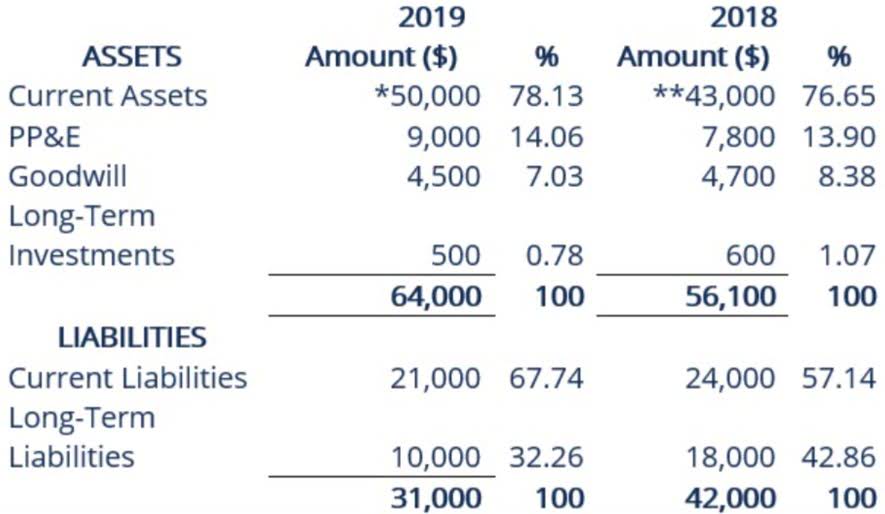Y/E (The accounting abbreviation for year-end) – Signifies the company’s closing month of the accounting year. NET (Net income) – A https://www.bookstime.com/ measure of a company’s profitability calculated by subtracting its expenses. MTM (Mark-to-market) – Mark-to-market accounting is a method to determine the value of an asset that can fluctuate over time.
Average Collection Period (ACP)
- In the banking sector, Availability (AVAIL) generally refers to funds available for immediate use or withdrawal from an account.
- The owner’s stake in the firm is usually expressed as a percentage of stock.
- Net Income(NI or NET) comprises the total earnings (or profit) acquired by a business after subtracting all expenses, including taxes and operational costs.
- MTM (Mark-to-market) – Mark-to-market accounting is a method to determine the value of an asset that can fluctuate over time.
- There are three types of financial statements Income Statement, Balance Sheet, and Cash Flow Statement.
- In accounting terminology, transfer (TFR or XFER) often refers to when funds are moved from one account to another within the same financial institution or between two separate institutions.
- BO (Business organization) – The term refers to a company, partnership, or sole proprietorship.
OE tells you how much equity you have in the company and how much money you’ll take home after paying for the business’s liabilities. Retained earnings (RE) are calculated by public companies with investors. RE is a portion of the company’s net income that, instead of being sent to investors, is retained to grow the business. Current assets (CA) totals the value of any assets you expect to convert into cash within the next year. Now, suppose the owner also borrows $5,000 from the bank, which is then deposited into their account. Let’s move ahead so that you can gain a more detailed understanding of the basic accounting equation and its components.
International Accounting Standards Board (IASB)
COGS (Cost of goods sold) – The amount of money spent to acquire or produce the goods a company sells. CMV (Current market value) – This is the value of a financial instrument at the moment. CI (Certificate of incorporation) – A document filed with a state government to create a corporation.
- Variable expenses are costs that change in direct proportion to the output volume or activity level.
- This shall act as a basis for our understanding of the concept and its related factors.
- They are deductions from an owner’s equity that are caused by the operation of a business.
- Cash flow from assets (CFFA) measures how much cash these assets generate during a given period, which tells you how efficiently your business uses these assets.
- Bookkeeping(BK), one pillar of accounting, centers around recording all financial transactions like purchases, sales, receipts & payments by an individual or organization properly.
- Design-Build-Finance-Operate-Maintain (DBFOM) are projects that bundle design and construction services with operations & maintenance support under one contract agreement.
- CD (Certificate of deposit) – A certificate issued by a bank that indicates that the holder has deposited a certain amount of money in the bank for a specific period of time.
Accounting Equation’s Effects on Business Transactions
Reclassification (RCS) is an accounting process where items are shifted between different categories within financial statements based on changes in use or purpose. A Public Limited Company (PLC) is a type of corporation permitted to offer its shares to the public. Often, these entities are listed on a stock exchange, allowing shareholders to buy and sell shares freely. Operating Cash Flow(OCF) refers to the total cash generated by a company’s regular business operations. Management’s Discussion and Analysis (MD&A) is a section in a company’s annual report wherein management discusses various aspects of the company’s financial performance. A leveraged buyout(LBO) involves an entity purchasing another with mostly borrowed funds, intending to pay through future cash flows, or selling assets from the acquired entity.
- Asset Value Adjustment (AVA) typically refers to a downward adjustment made to the value of a company’s assets based on current market conditions.
- Cost-Sharing(CS), or matching funds, refers to the distribution of costs between multiple parties within any agreement or project.
- LBO (Leveraged buyout) – A transaction in which a company is acquired using a significant amount of borrowed money.
- The accounting equation describes the relationship that exists between the assets and liabilities of a company, in addition to the owner’s equity.
- IFRS (International Financial Reporting Standards) – This accounting acronyms list entry refers to the set of accounting standards used in most countries around the world.
These activities are typically carried out with the purpose of earning money. These oe accounting various forms of economic activity result in a wide range of payables. For example, cash, inventory, furniture, machinery, buildings, goodwill, etc. Thus, ABC & Co. has $17.5 billion of claims against its $17.5 billion of assets. PV (Present value) – The value of a sum of money today when a chosen interest rate discounts it.
What does AP denote in accounting terminology?
- First, we have a Sales revenue figure from which we reduce COGS, i.e., the cost of goods sold, which includes Raw material cost, wages cost, etc., to get Gross Profit.
- An Enrolled Agent(EA) is a federally-authorized tax practitioner with technical expertise in taxation & can represent taxpayers before the IRS.
- WACC (Weighted average cost of capital) – The average cost of financing company’s assets, weighted by the amount of debt and equity each type of financing represents.
- In the past, ledgers were large books of all business accounts and transactions.
- Americans are the nation with the highest college debt in the world, with the trend of growing student debt balances showing no signs of slowing down.
An Initial Public Offering(IPO) refers to the process by which a privately held company becomes publicly traded on a stock exchange. Gross National Product(GNP) measures the value produced by residents over a specific period, irrespective of where production took place. Federal Deposit Insurance Corporation(FDIC), offers insurance HOA Accounting cover on bank deposit accounts to reassure trust and encourage stability within the financial system. An Equity Partner (EP) refers to a partner in a partnership who owns equity shares of the firm’s profits and losses. Debt-in-place(DIP) signifies the amount of debt a company carries at a given point on its balance sheet. Deferred Income(DI), often known as unearned or prepaid revenue, refers to cash a company receives before it provides products or services.





